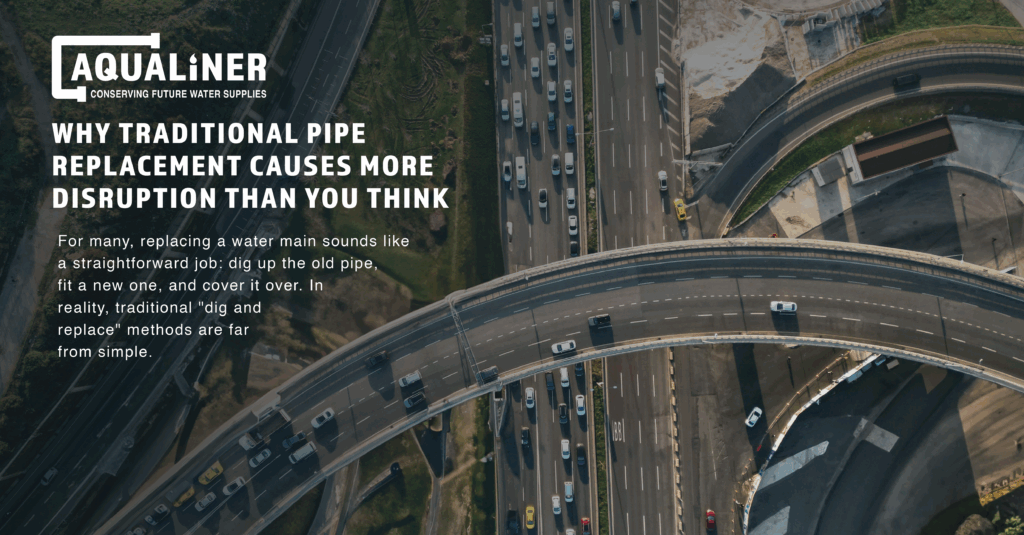Why Traditional Pipe Replacement Causes More Disruption Than You Think

For many, replacing a water main sounds like a straightforward job: dig up the old pipe, fit a new one, and cover it over. In reality, traditional “dig and replace” methods are far from simple, and the real impact on communities, businesses and budgets is often underestimated.
At Aqualiner, we see the ripple effects of large-scale excavation projects every day. That is why we have developed a solution designed to restore ageing water mains without the disruption.
“Infrastructure renewal is not just an engineering project. It is about protecting communities while delivering long-term resilience.”
— Lord Darren Mott, Non-Executive Director, Aqualiner
The True Impact of Dig and Replace
Replacing a pipe through open excavation is not just about labour and materials. The broader consequences can be significant and long-lasting:
- Traffic congestion – Road closures and diversions can bring busy areas to a standstill or isolate rural communities.
- Economic impact – Reduced footfall for shops and hospitality, delivery delays, and cancelled events can hit local economies hard.
- Community frustration – Noise, dust and blocked access create understandable public pushback.
- Coordination delays – Overlapping underground utilities and unpredictable site conditions can stop projects in their tracks.
What starts as a planned upgrade can quickly become a complex and costly disruption lasting weeks or even months.
A Minimal Disruption Alternative
Our Melt in Place Pipe (MIPP) technology provides a modern alternative to full excavation. By installing a fully structural lining inside the existing pipe, we can:
- Avoid large-scale digging by working through a small number of access points.
- Preserve roads, pavements and landscaping so communities see less visible impact.
- Work faster with many installations completed in days rather than weeks.
- Reduce waste by reusing the existing pipe as a host structure.
The result is a water main restored to like-new condition without shutting down the area above it.
Why This Matters for Utilities and Councils
Minimal disruption is not just a community benefit; it is a strategic advantage:
- Better public relations and fewer complaints.
- Lower indirect costs from traffic management and lost economic activity.
- Easier scheduling without long-term road closures.
- Greater flexibility for asset management planning.
Conclusion
Traditional pipe replacement can create far more disruption than many anticipate, impacting traffic, local economies and public confidence. By choosing renewal methods that minimise digging, protect surrounding infrastructure and reduce project times, it is possible to address the challenges of ageing water mains without causing unnecessary upheaval. Balancing technical performance with consideration for communities is essential in delivering infrastructure upgrades that work for everyone.
